How to tame cockatiel to your hands?

Corella (nymph) is a small Australian parrot from the cockatoo family. The bird is small in size - from 30 to 35 cm, including the length of the tail, and the tail itself is 14–15 cm. Today there are many hybrid species of cockatiels, with a variety of bright colors of plumage. These parrots are curious, friendly and easy to tame. In captivity, nymphs reproduce well and quickly get used to communicating with humans - a bird can not only be taught to hand, but also taught to imitate human speech.
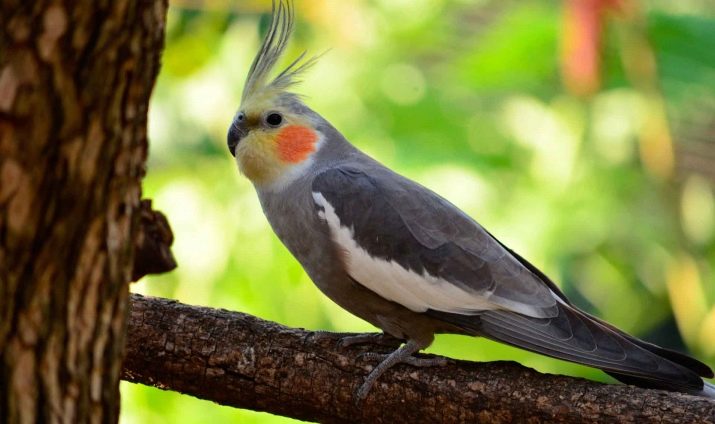
Peculiarities
Cockatiel chicks leave their nest in 6 weeks from the moment of birth - by this time their parents have already laid the next clutch of eggs and soon all parental attention will be directed to younger chicks.
The sooner a young parrot gets to its owner, the easier and stronger a relationship of trust is established between them.
Corella quickly gets used to the person and tries to imitate him. It happens that the female refuses to feed the chicks, and then all care for the offspring passes into the hands of a person. In this situation, the chicks, growing up, perceive the person who nursed them as a caring mother, they trust him in everything and boldly make contact.
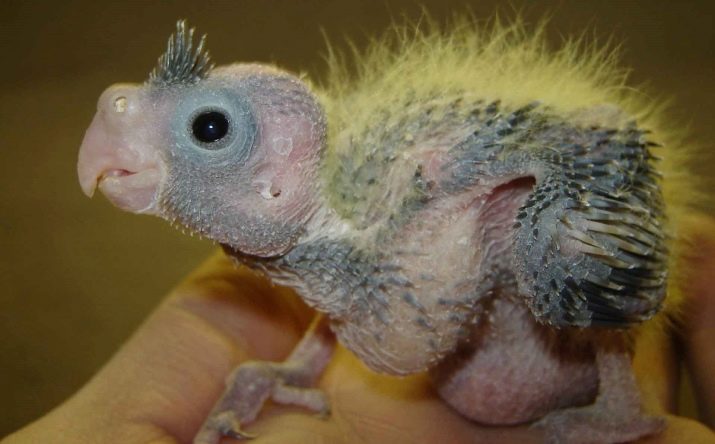
Grown up birds that do not have contact with people are wary of any person and it takes them some time to get used to the owner's sight, his voice, and smell. If the parrot previously had an owner, and this experience turned out to be negative, the bird will not be able to entrust itself to people for a long time. A parrot, like a dog, ideally should have one owner who takes care of his pet, feeds him, plays with him, constantly communicates.
To tame the cockatiel it is necessary to make friends with him and always maintain relations at a friendly level, completely excluding negative moments. To tame an already matured chick is a little more difficult than a little baby - it will take regular affectionate communication with a bird, which will take a lot of time and effort, but if you want and persist, everything will definitely work out, and a friendly, trusting relationship will be established for many years.
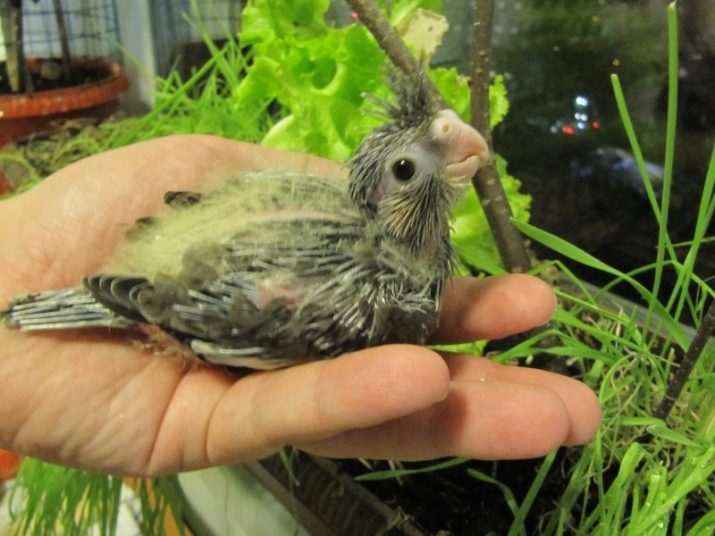
Having brought your pet into the house, you need to be prepared for the fact that for a parrot, a change of scenery will be a serious stress. At first, the bird will rush very restlessly inside its cage, it can start flapping its wings, making noise, biting and not allowing it to be poured into food, changing water. During this adaptation period, it is best not to insist on contact and give time for the nymph to look around, get used to it and calm down.
This can take several days or weeks. During this period, it is important for a person to show calmness and understanding. - there should be a calm atmosphere in the house, sharp sounds, bright flashes of light should be avoided, the parrot should not be shown to guests.
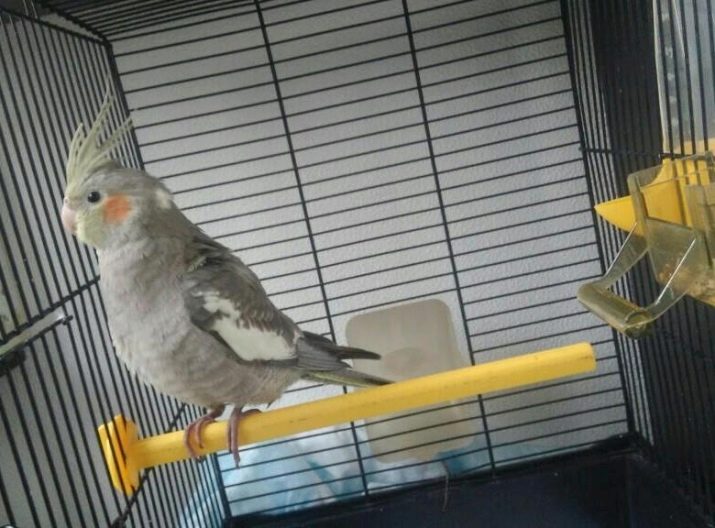
How quickly does a parrot adapt to its arms?
The wild parrot, by its nature, is afraid of everything new for itself, although it is curious, it masters the world with caution. To accustom the bird to yourself, the owner should do all movements slowly and smoothly, talking to the nymph in a calm, benevolent tone. All this will interest the parrot, and he will start watching you. In the course of this observation, over time, the bird will understand that you are not a source of danger for it, and its interest in you will increase.
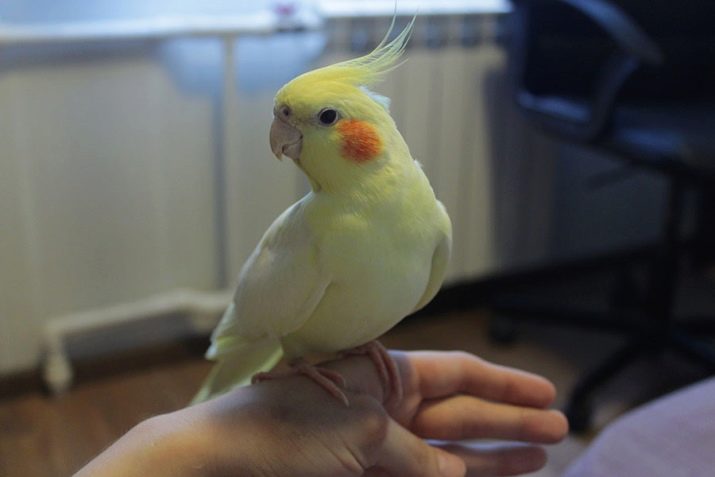
No need to force events – sharply climb into the bird's cage, catch it and pull it out for contact - such actions will be perceived by the Corella as aggression and will begin to bite and scratch you, actively defending itself and its territory.
The formation of a habit of your presence should be gradual - try to be close to the cage and go about your business during the first time after adaptation.
As soon as the nymph begins to observe you, you can start talking to her. This should take several days - over time you will see that your presence does not bother the pet and he can calmly do his usual things in your presence: peck grains, drink water, twitter. This is a very good sign that the parrot already has trust in you.
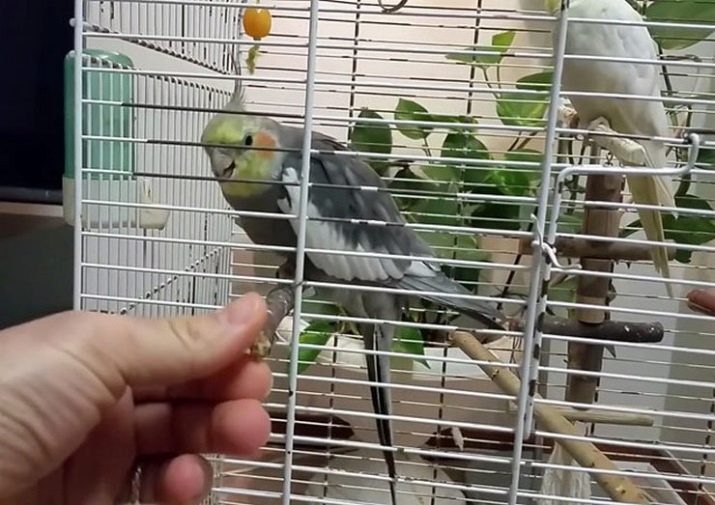
Having established a friendly contact, it is too early to talk about hand training. The next steps are ahead and should be done in stages and without haste. The timing of these stages in each case is individual. It all depends on the temperament of the bird, its character, habits, mood and even well-being.
In the meantime, just observe what treat your pet loves the most or what he eats faster and more willingly from the food offered to him. These observations will help you further train your parrot.
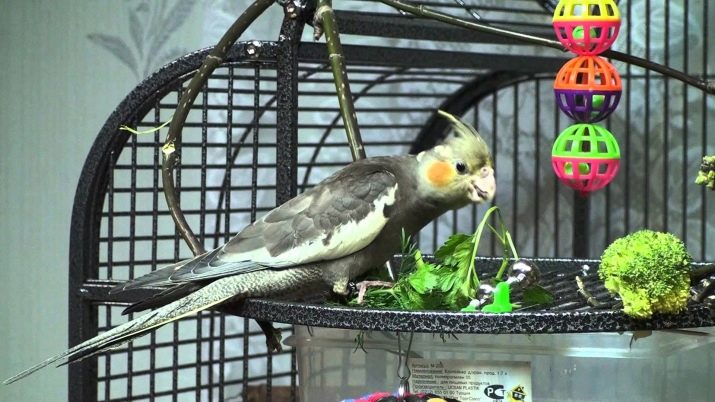
How to tame an adult cockatiel?
In order to establish contact with a parrot, you need to interest him. There are two things that will help you with this question. First, cockatiels are famous for their food. Second - parrots love toys that are bright and interesting from their point of view. If you use this knowledge correctly about what your pet loves and is interested in, it will not be difficult to win his love.
Food
Cockatiels feed on plant seeds, fruits, some types of vegetables, berries. A treat for them can be: sunflower or pumpkin seeds, pieces of sweet berries, a banana, an orange slice, an apple or a pear, a sweet carrot, a slice of cucumber or tomato.
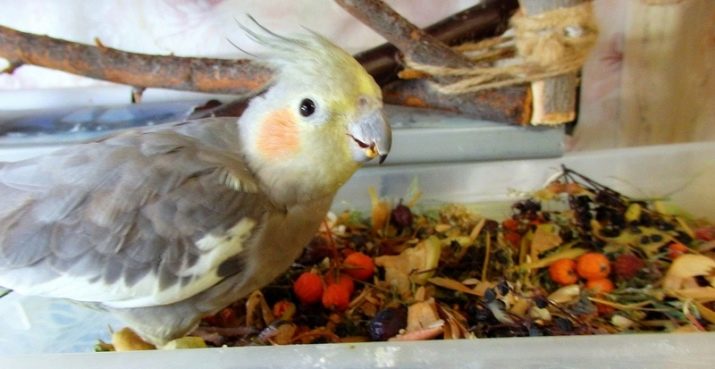
In order to interest the pet, he needs to bring a tasty piece to the rods outside the cage, but not to crawl into it with his hand.
The parrot may not immediately respond to your offer, but if you do this periodically, then the nymph will begin to approach and carefully take a piece of delicacy. Continue to consolidate this result every day, and when you achieve the fact that when the bird sees the piece between the rods, it happily comes up and takes it, you can be sure that the skill is fixed.
Now you need to move on to the stage of getting used to taking a treat from your hand. To do this, put a piece in the palm of your hand and bring it to the open door of the cage, slightly bringing your hand into its limits. It is possible that the bird will not want to take the offered treat, but this is only at first. If you continue these actions every day, you will see that the offer will be accepted. Fix the result for several days until the pet begins to approach without fear and take food from the palm of his hand.
Do not forget to praise the nymph during this time, speaking to her in a friendly tone.
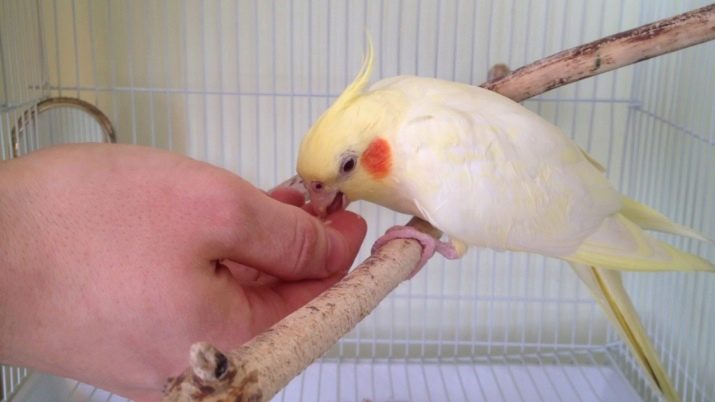
Once the parrot is accustomed to your hand, the palm containing the food can be placed completely inside the cage, but you need to raise your hand so that it is higher than the height of the bird, thereby forcing it to reach for food and forcing it to climb into your palm.
Such manipulations must be carried out only when the bird is in a good mood and has not yet had time to eat - this happens in the morning, after sleep. By regularly repeating this technique, you will teach the bird to wait for food and your hand and enjoy food from the palm of your hand with pleasure. And when the cockatiel gets used to this action, you can offer a palm with a treat outside the cage.
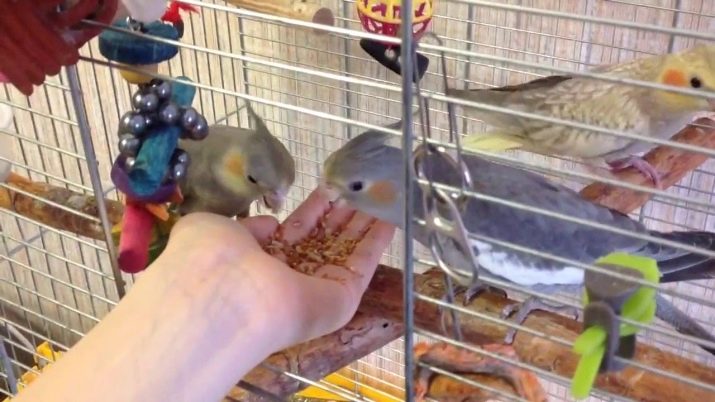
Having mastered this stage, as well as fixing it, try to offer the nymph an empty palm without a treat. If the pet is annoyed, surprised and does not want to climb into the palm where there is no food, no matter how much you offer it to him, you need to try to change tactics.
The hand is brought to the parrot sitting on the perch and is stopped at the level of his paws, as if inviting him to step into your palm. Or so - gently slide the edge of your hand over the belly of the bird and it, having lost its balance, will reflexively step into your hand.
Don't forget to immediately give your parrot a treat and compliment him. If you do this regularly, soon the bird will get used to your hand and will sit on it without fear.
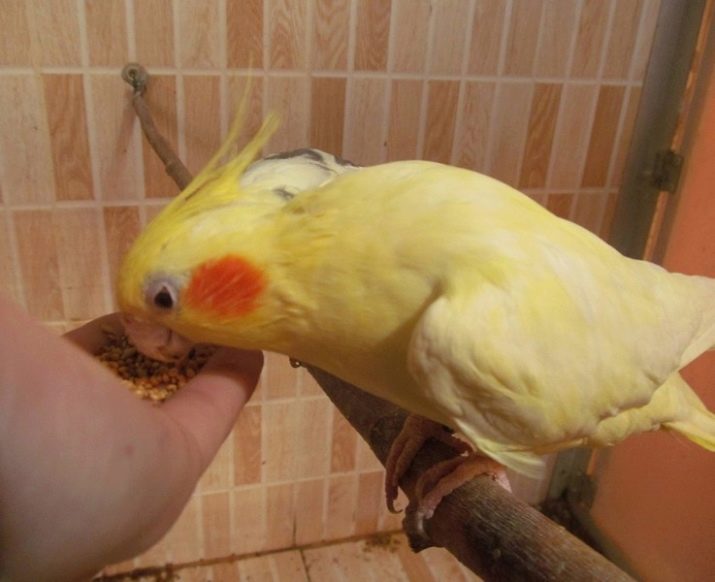
Toys
You can accustom the cockatiel to your hands not only with a delicacy, but also with the help of toys, which young birds are especially interested in. All nymphs are very curious and always react with interest to new objects, sounds and even sensations. Instead of treats, you can place bright balls, jingling bells, a bunch of colorful feathers, a small shiny mirror, and the like on the palm of your hand.
For a parrot, all these things seem incredibly interesting, and they treat them without fear, since curiosity in this case is so great that it overpowers their fear.
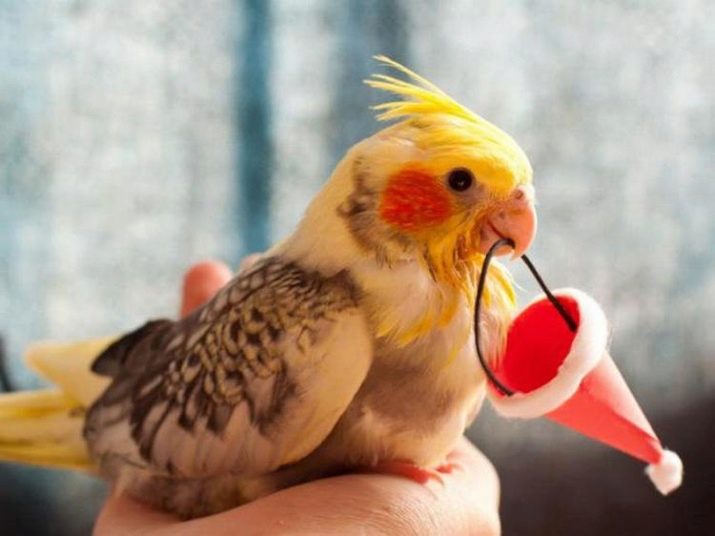
Try these items with your pet in a relaxed and welcoming environment. If you do this regularly, then during the game a good friendship will be established between you and the cockatiel parrot will willingly go into your hands, knowing that it is fun and safe with you.
During the game, do not forget to praise the bird, consolidating the results.

What if he is afraid and bites?
In that case, if your parrot is afraid of you, behaves aggressively, tries to bite - you need to understand that getting used to something at the moment is premature. Without an established friendly relationship, full contact with the bird is impossible. If this is a young chick, then the situation is much easier to fix than if you took a parrot that was already raised by someone and something left a negative imprint on his psyche and behavior.
Gaining trust and establishing lasting contact is a very long and difficult process, especially against the backdrop of aggression from the bird. The parrot's inadequate behavior from your point of view is explained by the fact that he is scared and in this way tries to protect himself from the world around him. To correct the situation, first of all, you will need to create a calm and safe environment for him.
In order for the bird to calm down and become trusting, you will have to spend more than one month on this, and only with patience, endurance and a good attitude can contact be established.
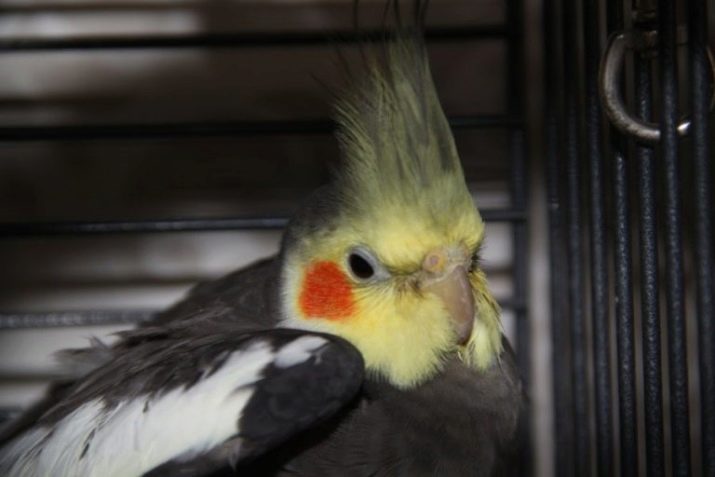
In order not to provoke the cockatiel to aggressive behavior, try not to make some mistakes.
- Never rush things, focus on your pet and his condition, if you see that he is not disposed to contact - do not insist, leave the bird alone.
- Do not shout at the parrot - he understands the intonation of the human voice very well and reacts to them accordingly.
- Be tactful - do not rudely grab the bird, do not cause inconvenience to it, do not deliberately anger it, causing negativity.
- Do not make sharp waves of your hands in front of the cage with a parrot, do not turn on household appliances with a sudden sharp and loud sound, as all this scares and traumatizes the psyche of your pet.
- The parrot's cage should be a zone of its absolute safety, in which no one can intrude without the pet's desire.
- Your pet requires daily attention and care, and not from time to time when you want it.
- Try to keep the bird only one owner, do not delegate the care of your friend to anyone else.
- During the taming process, never forget to praise your pet and reward its success with a delicious treat.
- Always take into account the mood and well-being of your ward - if you notice that something is wrong with him, immediately seek help from the veterinary service. Until the bird recovers and gets stronger, do not force it to train.
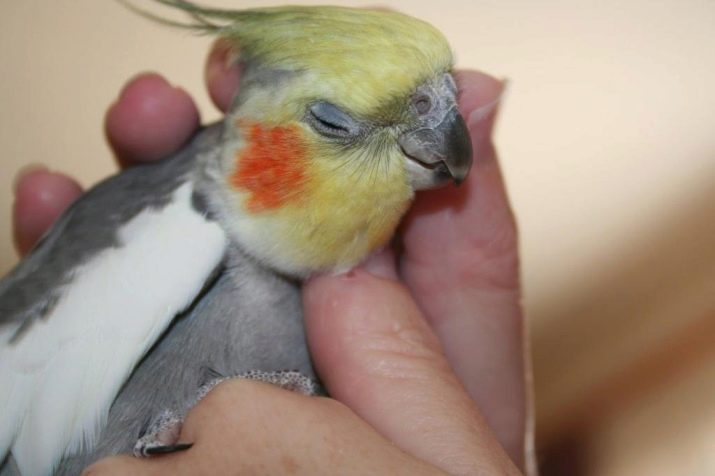
In order to establish a friendly contact with the Corella, try to create comfortable living conditions for him - the cage should be spacious enough and clean, inside you need to equip a feeding place, a drinking bowl, a bathing tray. Be sure to place toys and perches so your friend doesn't get bored. Pay attention to the balance and regularity of feeding, there should always be clean and fresh water in the cage.
Every year, the parrot needs to be shown to the veterinarian for prophylaxis. Taking good care of your pet is part of a positive attitude towards you.
Trust is a very fragile and valuable thing. It is difficult to win it, but you can easily lose it. Try to maintain your connections and affection for each other and remember that real friendship does not arise immediately, but once it appears, it lasts a very, very long time.
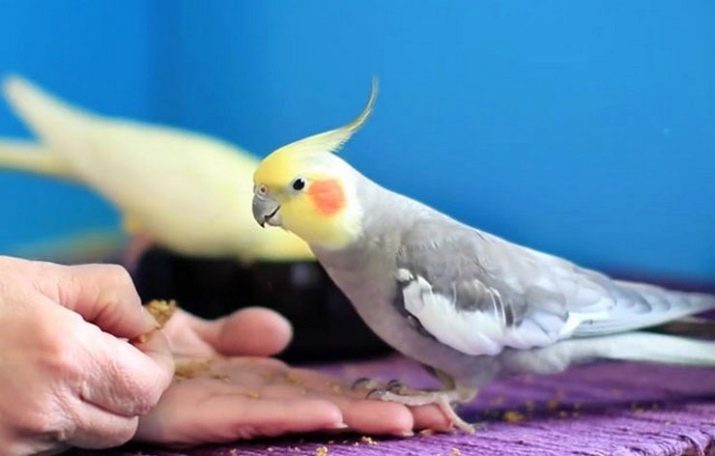
For information on how to tame a cockatiel, see the next video.








